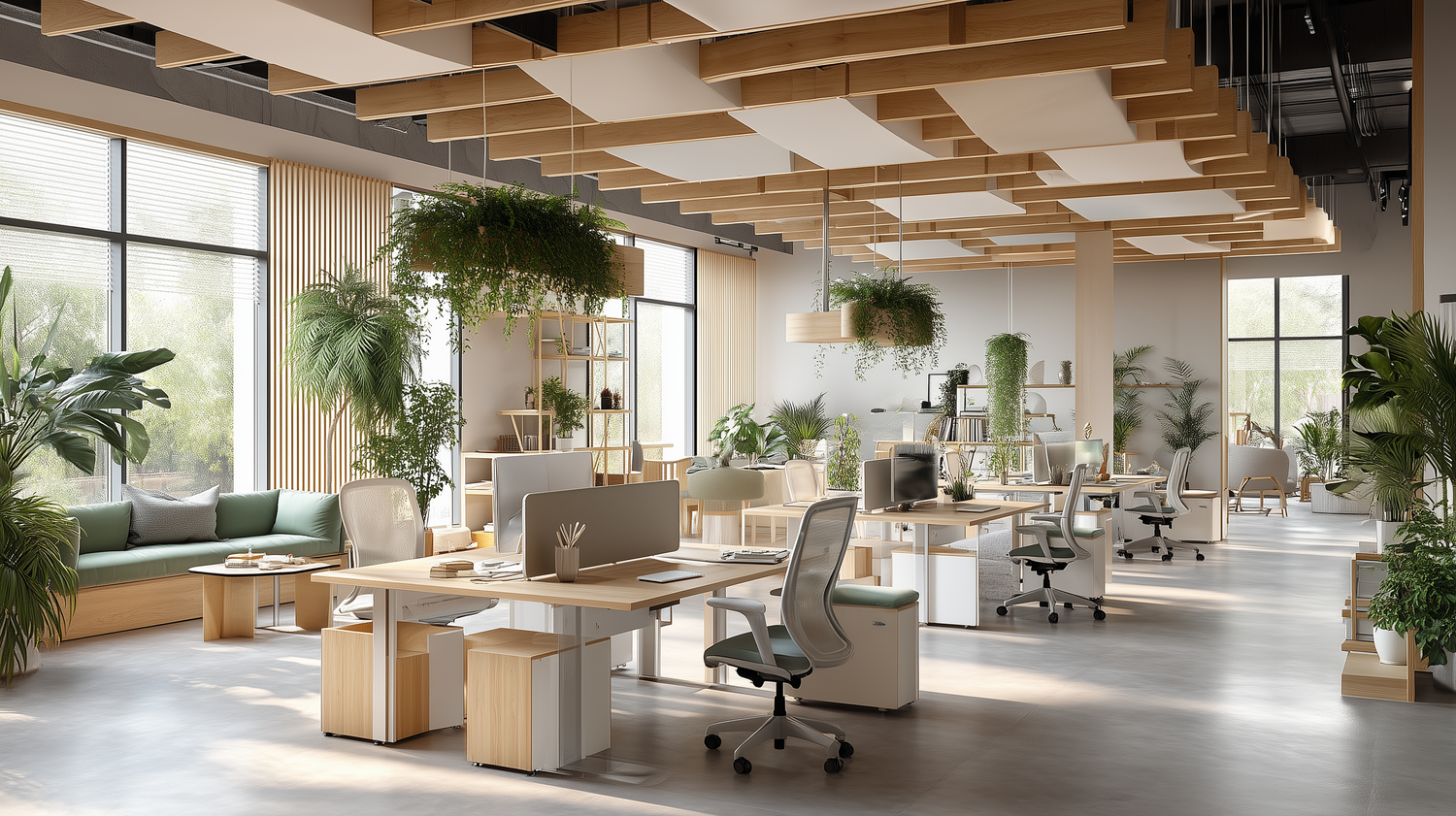Introduction to Office Design and Mental Health
The modern workplace is evolving, with a growing recognition of the profound impact that office design has on mental health. As we spend a significant portion of our lives at work, the physical environment can either contribute to stress and mental fatigue or foster well-being and productivity. This article explores the vital connection between office design and mental health, shedding light on how thoughtful design elements can create a nurturing and supportive workspace.
The Psychology of Space
Our surroundings have a deep psychological effect on us. A well-designed office can boost mood and productivity by incorporating elements of biophilic design, which integrates natural materials, light, and vegetation into the workspace. This approach not only reduces stress but also enhances creativity and focus.
Key Elements of a Healthy Office Design
- Natural Light and Ventilation: Adequate lighting and fresh air are essential for maintaining energy levels and mood. Studies show that natural light improves sleep and vitality, directly impacting mental health.
- Ergonomic Furniture and Equipment: Comfortable, adjustable furniture reduces physical strain, which can lead to better mental well-being. Ergonomic designs ensure that employees can work comfortably, minimizing the risk of discomfort and stress.
- Color Psychology in Office Design: Colors significantly affect our psychological state. For example, blue hues can have a calming effect and encourage productivity, while green can reduce eye strain and promote relaxation.
Incorporating Nature into the Workspace
Incorporating plants and green spaces into office design has been shown to lower stress and enhance employee satisfaction and cognitive function. Biophilic design principles foster a connection to nature, promoting a sense of well-being and relaxation.
Designing for Flexibility and Movement
Encouraging movement throughout the day can greatly impact mental health. Adjustable workspaces and designs that promote physical activity can reduce the risk of depression and anxiety, enhancing overall well-being.
Personalization and Mental Well-being
Personal space in the workplace allows for customization and control over one's environment, which can significantly affect mental health. Personalized workspaces make employees feel valued and comfortable, contributing to higher satisfaction and engagement.
Technology and Mental Health in the Office
Smart office solutions that support wellness, such as apps that encourage breaks or mindfulness exercises, can play a pivotal role in maintaining mental health. However, it's crucial to balance technology use to prevent overstimulation and distraction.
Case Studies: Successful Office Designs
Several companies have pioneered mental health-focused office designs, demonstrating the positive outcomes of such initiatives. These case studies offer valuable insights into practical applications and the benefits of prioritizing mental health in workspace design.
Challenges and Considerations
While the benefits of a mental health-focused office design are clear, there are challenges, including costs and diverse employee needs. Finding a balance that accommodates various preferences while promoting wellness is essential for success.
Future Trends in Office Design for Mental Health
Advancements in technology, such as AI and VR, and a focus on sustainable practices are shaping the future of office design. These trends offer exciting possibilities for enhancing workplace wellness and mental health.
Conclusion: The Future of Workplace Wellness
The connection between office design and mental health is undeniable. As awareness grows, more companies are recognizing the value of investing in spaces that promote well-being. The future of workplace design is bright, with a focus on creating environments that not only meet physical needs but also support mental and emotional health.
FAQs
What is biophilic design?
How does natural light affect productivity and mental health in the office?
Why is ergonomic furniture important for mental health?
Can office design really improve employee satisfaction and engagement?
What role does personalization play in workplace well-being?
How are technology and smart office solutions impacting mental health in the workplace?






